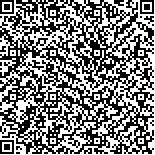| 摘要: |
| 传统乡村规划偏重实体物质空间改
善与要素组织,依赖实体集聚,因而空间可
达性较低的边远乡村始终面临着发展困境。
移动互联网改变了空间可达性的界定,流乡
村开始涌现,为边远乡村的发展提供了新的
机遇。基于此,本文确立虚实互促的流乡村
发展理念,构建实体、虚拟双维度的潜力识
别体系和线上、线下相协同的规划方法,并
以贵州省石阡县楼上村为例进行实践检验。
提出嫁接移动互联网后的产业转型、营销提
质、空间虚实互动以及治理多元化等策略,为
边远乡村创新发展提供借鉴。 |
| 关键词: 边远乡村 移动互联网时代 流乡
村 规划方法 |
| DOI:10.13791/j.cnki.hsfwest.20210103 |
| 分类号: |
| 基金项目:国家自然科学基金(51878329) |
|
| The Development Strategy and Planning Methodology for the Remote Countryside from thePerspective of Country in Flows: Taking Loushang Village of Guizhou Province as a Case |
|
MAO Ming,LUO Zhendong,LAN Jing
|
| Abstract: |
| The traditional rural planning focuses on the improvement of physical space and
the organization of elements, and relies on the agglomeration of entities. Therefore, the remote
countrysides with low spatial accessibility always face development difficulties. Mobile Internet
has changed the definition of spatial accessibility, and countries in flows have emerged, providing
new opportunities for the development of remote countryside. Based on this, this paper establishes
the development concept of country in flows with the mutual promotion of the entity and virtual
elements, holding the view that remote countryside can make full use of the advantages of the unique
heterogeneous local resources, while solving the problem of poor spatial accessibility through virtual
agglomeration. In addition, this paper constructs the potential identification system of two dimensions
of entity and virtual, which points out that the development planning of remote countryside should
pay attention to its development in virtual and physical space at the same time. Therefore, besides
traditional offline identification, online research is added to form a more three-dimensional and multi-
dimensional feature identification. The planning methodology of online and offline coordination
is also proposed, which points out that the planning of remote countryside needs to coordinate the
allocation of online and offline resources, and actively promotes the element connection of virtual and
real space on the basis of overall consideration of industry, space, governance and other subsystems,
and finally realize the change to the country in flow. At last, this paper takes the Loushang village of
Shiqian County in Guizhou Province as an example to test the practice. It has carried out research on
the status quo from online and offline dimensions and points out that Loushang village maintains the
spatial pattern and cultural characteristics of traditional villages, has good ecological resources, and
is continuously concerned and strongly supported by the local government. The overall development
potential of Loushang village is great. At present, the difficulties of industrial development mainly
come from the remote location, mountainous terrain and talent shortages. At the same time, the
backwardness of online publicity leads to a lack of market awareness in a wider region, and the
dependence on government blood-transfusion investment will weaken the enthusiasm of local
innovation and entrepreneurship to a certain extent. In such conditions, in order to get rid of the
shackles of physical spatial location and realize the value transformation of historical culture and
ecological resources of Loushang village, Internet thinking must be used to establish the development
concept of “country in flow”. Therefore, this plan puts forward the strategies of industrial
transformation, marketing quality improvement, space virtual real interaction and governance
diversification in the era of mobile Internet, so as to provide references for the innovative development of remote countryside. The first is the industrial transformation. The industrial development of Loushang village needs to focus on tourism and agriculture
continuously, and opens up the market with the help of the diversified e-commerce mode of the Internet. On the one hand, it publicizes the original and
ecological life of Loushang village through new communication channels such as live broadcast and short video, and build momentum through online and
offline interaction. At the same time, it is needed to pay attention to the composition of “people-goods-places” and the quality of offline service, expand
the market of agricultural products and enhance the attraction of tourism resources to new customers, achieving online flow attraction and offline quality
improvement. The second is the interaction between virtual and real space, which includes two aspects. On the one hand, under the integration of “Xiangchou”
platform, the space construction mode of online and offline collusion, co construction and sharing is operated. On the other hand, the e-commerce and live
broadcast industry is implanted into the newly built part of Loushang village, making the new part and the old part with historical and traditional features
form a functional linkage. Finally, multiple governance of online and offline must be advocated in the governance system, including vertical restructuring
and horizontal collaboration. The vertical governance system is the basis of industrial upgrading. It is suggested to promote the formation of a governance
pattern led by the superior government, implemented by the two committees of the village, organized and guided by the “new rural sages” and actively
participated by the villagers. The horizontal governance system is an inevitable requirement to coordinate the interests of all parties and achieve sustainable
development on the basis of the existing industry. It can rely on the economic cooperation organization and online village affairs platform to form a
development pattern of multi-party coordination and online and offline villagers’ cogovernance and cooperation. |
| Key words: Remote Countryside Mobile Internet Era Country in Flows Planning Methodology |


